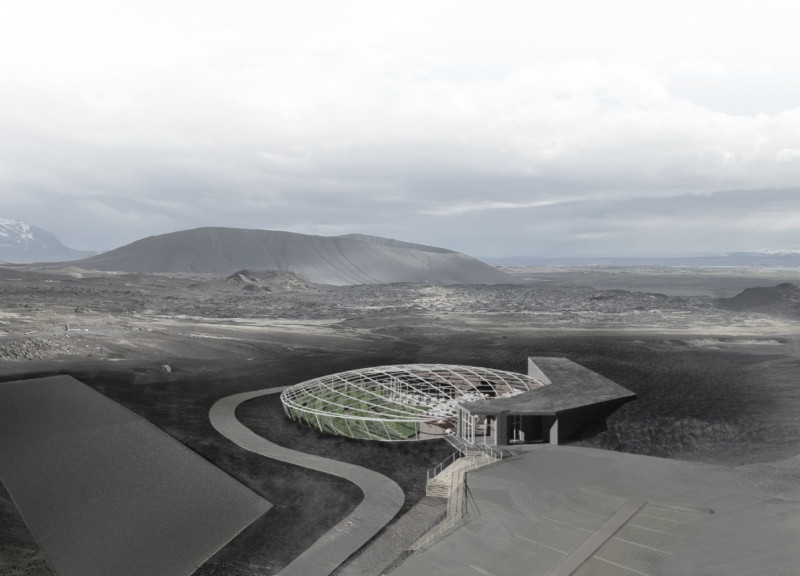5 key facts about this project
The project "DEW on Volcanic Rocks" is a contemporary greenhouse and restaurant situated in the volcanic Krafla region of Iceland. The design emphasizes sustainability, a connection to the surrounding environment, and the theme of hydration as represented by dew. It serves multiple functions, including agricultural production and culinary experiences, while engaging visitors in the dynamics of nature and food sourcing.
The architectural form is developed to harmonize with the natural landscape, employing a layout that maximizes light and views while facilitating the flow of air. The building is divided into distinct areas: a greenhouse dedicated to cultivating diverse plants, a restaurant that provides diners with the experience of enjoying freshly sourced ingredients, and a multi-purpose hall designed for community engagement. This arrangement encourages interaction between patrons and the agricultural practices of the site.
Unique Design Approaches
The design adopts an innovative approach to sustainability by integrating natural processes in its structure. The use of ETFE as a transparent covering not only enhances daylighting but also contributes to energy efficiency. The aerodynamic roof shape effectively manages wind loads, essential in a region known for its harsh climate.
Incorporating local materials, such as volcanic ash for insulation, connects the project to its geographical context, providing both practical benefits and a sense of place. The building's layout allows for maximum exposure to sunlight, essential for greenhouse functionality, while strategically placed openings facilitate natural ventilation. Additionally, the use of rainwater collection systems showcases the commitment to resource efficiency, enabling irrigation of the greenhouse and reducing reliance on external water sources.
Community-Oriented Features
Accessibility and interaction are fundamental to the design, encouraging exploration of both the greenhouse and restaurant areas. The multi-level structure provides various vantage points for users, fostering an immersive experience of the natural surroundings. Clear sightlines from the dining area to the greenhouse enhance the relationship between food preparation and cultivation, promoting an understanding of the farm-to-table concept.
The architectural outcome reflects an integrated ecosystem that balances built form with natural elements, serving as a model for future architectural designs in similar environments. Visitors interested in exploring this project further should review architectural plans, sections, and designs to gain a deeper understanding of the innovative approaches and functional outcomes of the "DEW on Volcanic Rocks."





















































